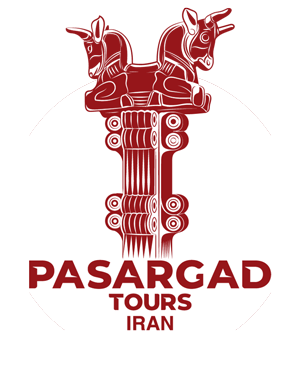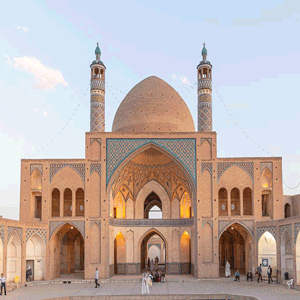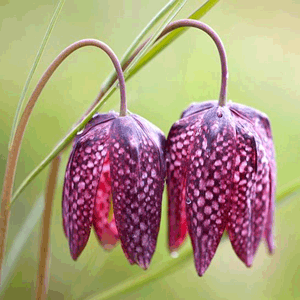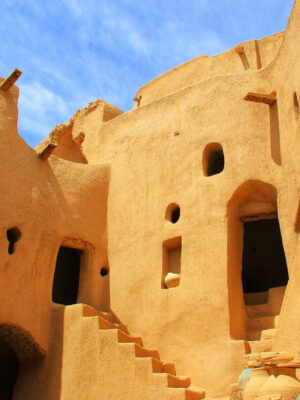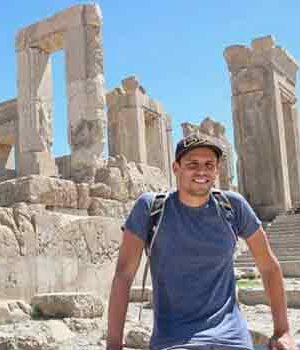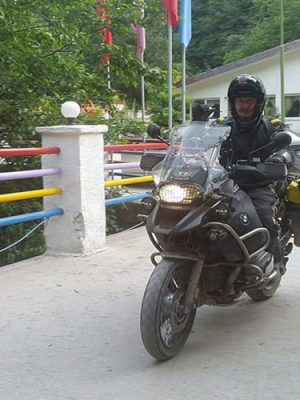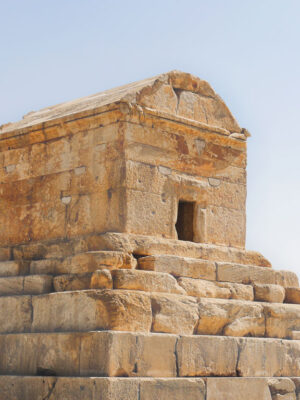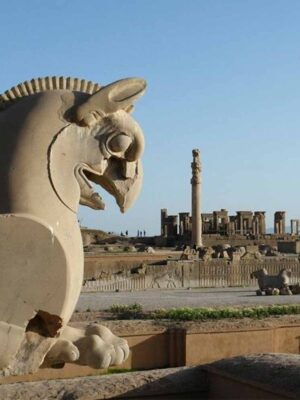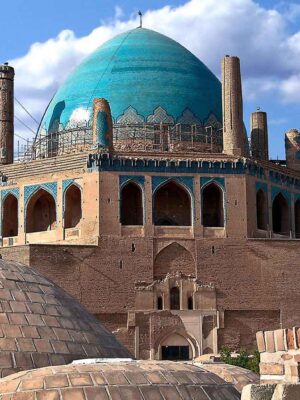Azadi Tower
One of the most significant structures of Iran, the Azadi Cultural Complex, is a perfect example of architectural artistry in Iran. Considering this structure as merely a tower would be inaccurate; It is a peculiar combination of an arch, gate, obelisk, museum, and a tower placed in a large city square. This masterpiece is one of the few contemporary examples of Iranian architecture that achieves its cultural status through the artistic representation of Iranian civilization. Moreover, it maintains symbolic significance in a diverse and rapidly evolving population. Most notably, Azadi Tower embodies the historical transition of Iran from the pre-Islamic period to the modern age.
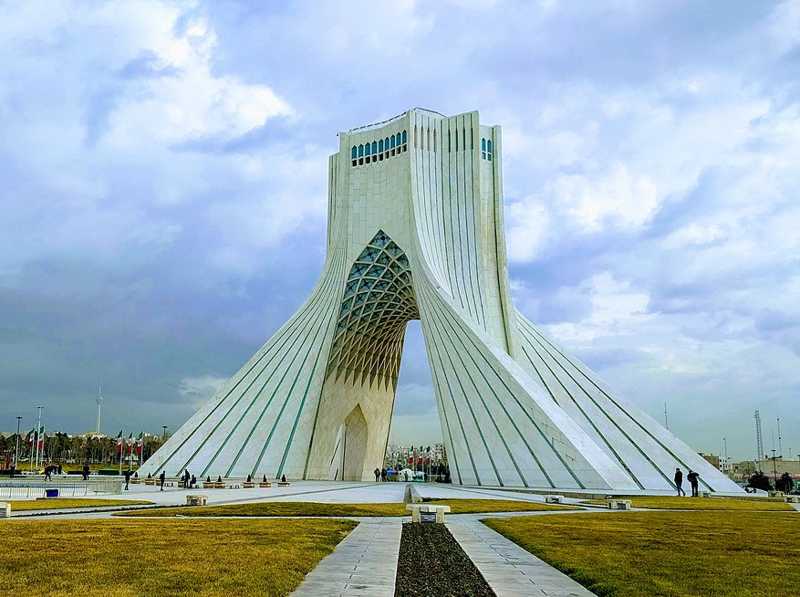
Azadi Tower in Automn
Comparable to monuments such as the Eifel Tower or Statue of Liberty, it exhibits the national inspiration of a nation for social transcendence. Above all, it manifests the sincere aspiration of Iranians for freedom and unity, their resolve for the future along with their pride in the past.
History of Azadi Tower
After the abdication and exile of Reza Shah in 1941, Mohammad Reza Pahlavi replaced his father as Shah of Iran. He inherited a country devastated through years of colonialism and forceful occupation of allied powers during the second world war. Such a desperate condition made him a controversial ruler tasked with rebuilding a nation; An autocrat who dreamt of restoring the glory of ancient Iranian civilization in the modern era. According to historians, Azadi Tower was commissioned to represent such transformation in the capital city of Tehran.
The Extent of Symbolic Politics
Before its design, it had to act as Tehran’s western gate. Furthermore, it was to symbolize the kingdom’s aspiration for the ancient power of pre-Islamic Iran. Names such as “Gate of Cyrus” and “Imperial Gate” were proposed but abandoned in favor of Šahyād Āryāmehr (Shah Ariamehr’s Memorial). In September 1966 a competition was announced for the monument’s design. A 24-year-old architect, Hossein Amanat, won the open competition. In 1971 Mohammad Reza Shah inaugurated the complex as an important part of a national celebration commemorating the 2,500th year of the foundation of the Imperial State of Iran.
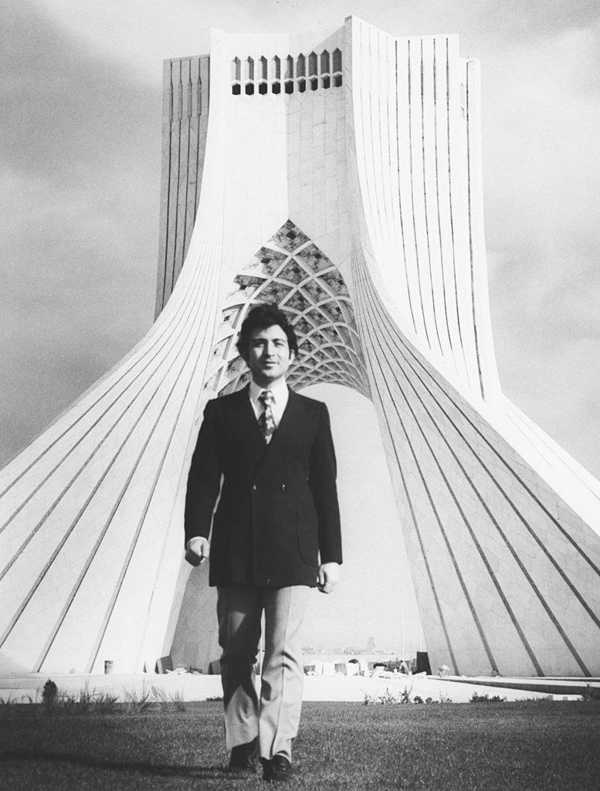
Hossein Amanat Walking in Front of Shayad Tower
The efforts to enrich the symbolic importance of the building went to such an extent that an inscribed golden plate weighing a kilogram was buried in the foundation of the tower. In addition, as if to saturate the inauguration ceremony with symbolic significance, Cyrus Cylinder, was also exhibited in the Shahyad Tower museum for the first time. The result was beyond satisfactory. The nation widely accepted and embraced the tower as a monument of its modern identity. At the inauguration, Mohammad Reza Shah proudly introduced the young architect to his international guest saying “This young man has designed this building”!
Islamic Revolution and Redefinition of Symbols
Despite their hatred for Shah, revolutionaries of the time could not resist the enchantment of Shahyad. Ironically, it played a major role in toppling the Pahlavi regime by providing millions of people a stage to gather in revolutionary rallies. As people saw it, Shahyad was not merely a monument to Shah; They perceived it as a monument to their heritage and their collective power. Undeniable Islamic elements of architecture along with its transformative theme went too well with the concept of the Islamic revolution.
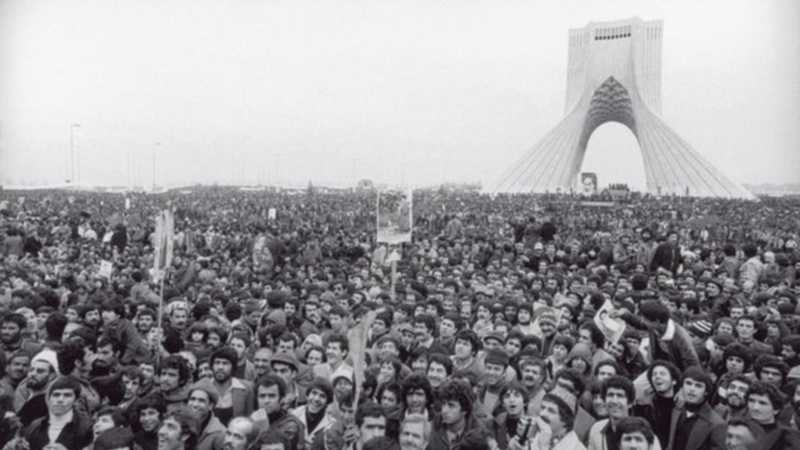
Revolutionaries Gathered Around Azadi Tower
As the revolutionary leaders saw it, a simple rebranding was enough to convert the whole complex into a revolutionary monument. Renaming the Shahyad to Azadi (Freedom) Tower, somewhat completed the evolutionary message of the original architecture. Consequently, it could now demonstrate a glorious transformation of the national power into the Islamic Republic. In other words, Azadi Tower could now symbolize a transcendence from despotism to democratic freedom.
Design and Architecture
Azadi cultural complex consists of a large square (Azadi Square), Azadi Tower, underground galleries, exhibition halls, a cinema, a library, and a museum. A proper study of the Azadi Cultural Complex, or even the Azadi Tower alone, deserves an extensive article if not a book. However, we can provide a brief introductory text to its prominent features.
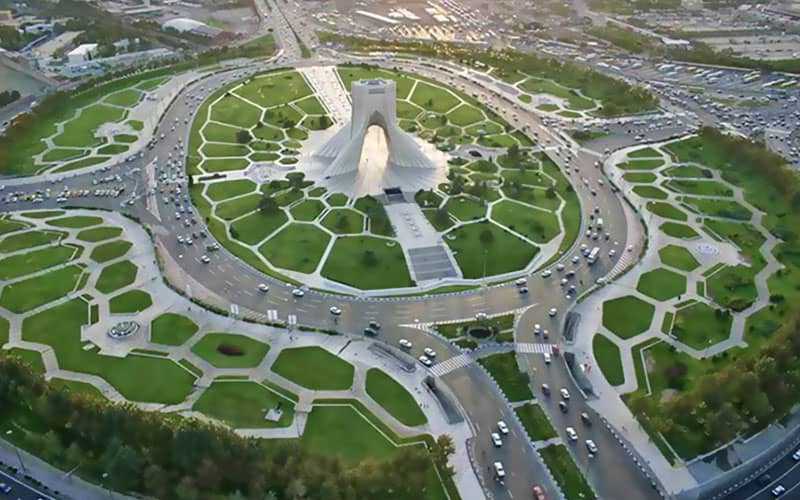
Aerial View of Azadi Square
Azadi Square
With an area of 50,000 m2, Azadi Square is the second largest square in Iran. The largest square of Iran, Naqsh-e Jahan Square, was an inspirational model for the architect. Hossein Amanat describes his design as “… inspired by the interior design of the dome of the Sheikh Lotfollah Mosque in Isfahan; However, the geometry of the dome has become oval”. Similarly, The gardens and water fountains also elucidate historic Iranian gardens. The slopes of Azadi Square were designed in a way to facilitate irrigation. In addition, it helps augment the importance and height of Azadi Tower located at the epicenter.
Azadi Tower
Azadi Tower is mainly constructed of reinforced concrete over a stainless steel structure segregated into four floors. Even though proximity to the airport limited the height of the building to 46 meters, it prompts ascension through the careful use of arcs in its design. The marble ornamentation of the facade also contributes to this quality. Moreover, it gives the tower a robust and archaic impression. The interior design enjoys the same historic association through subtle imitation of the Vakil Mosque. Nevertheless, the futuristic approach of the architect is comparable to interior scenes of a science fiction movie.
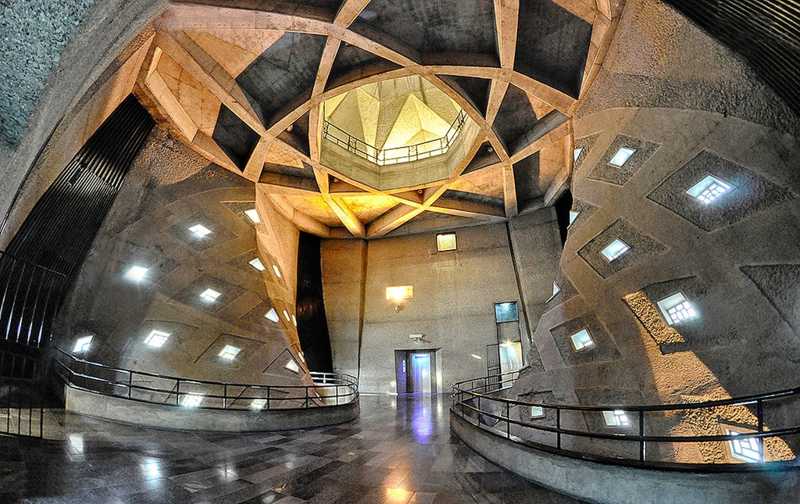
Azadi Tower – 2nd Floor Interior View
Azadi Museum
The basement of Azadi Tower consists of several interconnected galleries and other facilities. The main gallery dubbed Azadi Museum currently exhibits artifacts from Sassanids, Achaemenids, and Arcasid periods along with a wealth of Qajar jewelry transferred from Saadabad Museum. Part of the original content was displaced due to several reasons, most notably the association of the contents with the previous regime. Perhaps for the best, such replacement of objects added another controversy to the already controversial status of the building. In other words, keeping its dynamic symbolism alive.
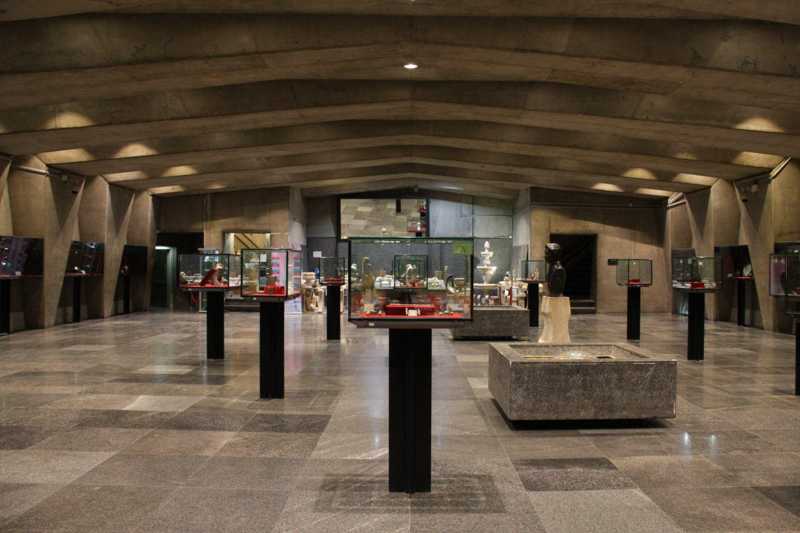
Azadi Museum
The Hall of Contemporary Technology
This section, which houses a now-outdated technology is conceivably an amusing part of the basement worth mentioning. It displays a pianist robot from the 1970s as well as a rack of low-resolution monitors connected to a bulky computer. The modern visitor can surely appreciate such transformation of what used to be cutting-edge technology into a historic artifact.
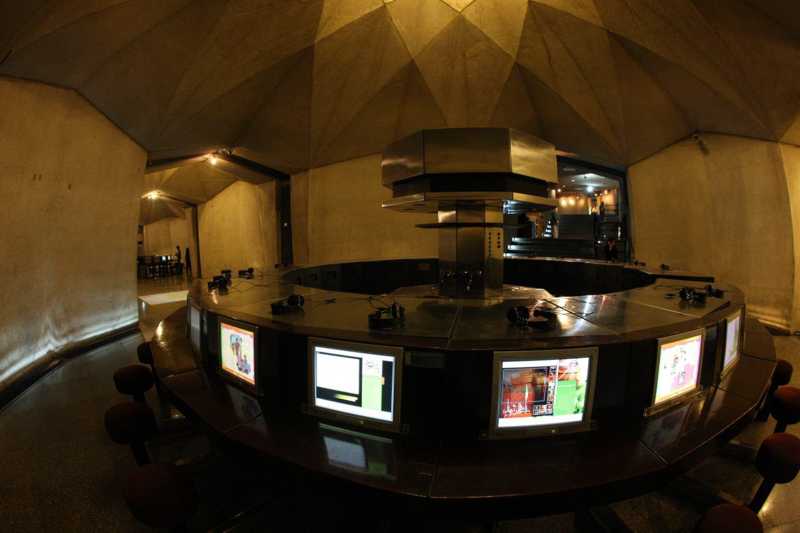
Interactive Vision System in The Hall of Contemporary Technology
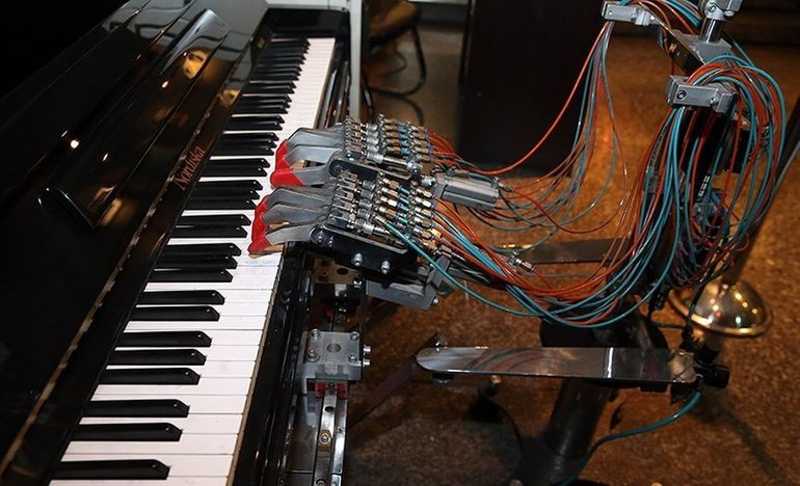
Pianist Robot in The Hall of Contemporary Technology
Visiting Azadi Tower
No matter if you are traveling to Iran as an individual or have booked a guided tour of Iran, make sure to visit this monument during your stay. Visiting this beautiful, marble-clad monument provides you with a chance to experience the contemporary history of Iran. It allows you to get in touch with culture and politics, artfully expressed through architecture. Milad Tower has recently overshadowed the importance of Azadi Tower as the defining monument of Tehran. However, it can hardly compete with the rich and turbulent history of the beloved Azadi Tower.
We highly recommend a guided visit to this site since a professional guide could help you appreciate the details you might otherwise miss. Furthermore, a guide provides you with a context that allows for comprehension of its mystic importance through the years. you can also try a preliminary version of the Virtual Tour of Azadi Tower before your visit. For reservations and more information about our tours, contact us at Pasargad Tours.
Azadi Tower
One of the most significant structures of Iran, the Azadi Cultural Complex, is a perfect example of architectural artistry in Iran. Considering this structure as merely a tower would be inaccurate; It is a peculiar combination of an arch, gate, obelisk, museum, and a tower placed in a large city square. This masterpiece is one of the few contemporary examples of Iranian architecture that achieves its cultural status through the artistic representation of Iranian civilization. Moreover, it maintains symbolic significance in a diverse and rapidly evolving population. Most notably, Azadi Tower embodies the historical transition of Iran from the pre-Islamic period to the modern age.

Azadi Tower in Automn
Comparable to monuments such as the Eifel Tower or Statue of Liberty, it exhibits the national inspiration of a nation for social transcendence. Above all, it manifests the sincere aspiration of Iranians for freedom and unity, their resolve for the future along with their pride in the past.
History of Azadi Tower
After the abdication and exile of Reza Shah in 1941, Mohammad Reza Pahlavi replaced his father as Shah of Iran. He inherited a country devastated through years of colonialism and forceful occupation of allied powers during the second world war. Such a desperate condition made him a controversial ruler tasked with rebuilding a nation; An autocrat who dreamt of restoring the glory of ancient Iranian civilization in the modern era. According to historians, Azadi Tower was commissioned to represent such transformation in the capital city of Tehran.
The Extent of Symbolic Politics
Before its design, it had to act as Tehran’s western gate. Furthermore, it was to symbolize the kingdom’s aspiration for the ancient power of pre-Islamic Iran. Names such as “Gate of Cyrus” and “Imperial Gate” were proposed but abandoned in favor of Šahyād Āryāmehr (Shah Ariamehr’s Memorial). In September 1966 a competition was announced for the monument’s design. A 24-year-old architect, Hossein Amanat, won the open competition. In 1971 Mohammad Reza Shah inaugurated the complex as an important part of a national celebration commemorating the 2,500th year of the foundation of the Imperial State of Iran.

Hossein Amanat Walking in Front of Shayad Tower
The efforts to enrich the symbolic importance of the building went to such an extent that an inscribed golden plate weighing a kilogram was buried in the foundation of the tower. In addition, as if to saturate the inauguration ceremony with symbolic significance, Cyrus Cylinder, was also exhibited in the Shahyad Tower museum for the first time. The result was beyond satisfactory. The nation widely accepted and embraced the tower as a monument of its modern identity. At the inauguration, Mohammad Reza Shah proudly introduced the young architect to his international guest saying “This young man has designed this building”!
Islamic Revolution and Redefinition of Symbols
Despite their hatred for Shah, revolutionaries of the time could not resist the enchantment of Shahyad. Ironically, it played a major role in toppling the Pahlavi regime by providing millions of people a stage to gather in revolutionary rallies. As people saw it, Shahyad was not merely a monument to Shah; They perceived it as a monument to their heritage and their collective power. Undeniable Islamic elements of architecture along with its transformative theme went too well with the concept of the Islamic revolution.

Revolutionaries Gathered Around Azadi Tower
As the revolutionary leaders saw it, a simple rebranding was enough to convert the whole complex into a revolutionary monument. Renaming the Shahyad to Azadi (Freedom) Tower, somewhat completed the evolutionary message of the original architecture. Consequently, it could now demonstrate a glorious transformation of the national power into the Islamic Republic. In other words, Azadi Tower could now symbolize a transcendence from despotism to democratic freedom.
Design and Architecture
Azadi cultural complex consists of a large square (Azadi Square), Azadi Tower, underground galleries, exhibition halls, a cinema, a library, and a museum. A proper study of the Azadi Cultural Complex, or even the Azadi Tower alone, deserves an extensive article if not a book. However, we can provide a brief introductory text to its prominent features.

Aerial View of Azadi Square
Azadi Square
With an area of 50,000 m2, Azadi Square is the second largest square in Iran. The largest square of Iran, Naqsh-e Jahan Square, was an inspirational model for the architect. Hossein Amanat describes his design as “… inspired by the interior design of the dome of the Sheikh Lotfollah Mosque in Isfahan; However, the geometry of the dome has become oval”. Similarly, The gardens and water fountains also elucidate historic Iranian gardens. The slopes of Azadi Square were designed in a way to facilitate irrigation. In addition, it helps augment the importance and height of Azadi Tower located at the epicenter.
Azadi Tower
Azadi Tower is mainly constructed of reinforced concrete over a stainless steel structure segregated into four floors. Even though proximity to the airport limited the height of the building to 46 meters, it prompts ascension through the careful use of arcs in its design. The marble ornamentation of the facade also contributes to this quality. Moreover, it gives the tower a robust and archaic impression. The interior design enjoys the same historic association through subtle imitation of the Vakil Mosque. Nevertheless, the futuristic approach of the architect is comparable to interior scenes of a science fiction movie.

Azadi Tower – 2nd Floor Interior View
Azadi Museum
The basement of Azadi Tower consists of several interconnected galleries and other facilities. The main gallery dubbed Azadi Museum currently exhibits artifacts from Sassanids, Achaemenids, and Arcasid periods along with a wealth of Qajar jewelry transferred from Saadabad Museum. Part of the original content was displaced due to several reasons, most notably the association of the contents with the previous regime. Perhaps for the best, such replacement of objects added another controversy to the already controversial status of the building. In other words, keeping its dynamic symbolism alive.

Azadi Museum
The Hall of Contemporary Technology
This section, which houses a now-outdated technology is conceivably an amusing part of the basement worth mentioning. It displays a pianist robot from the 1970s as well as a rack of low-resolution monitors connected to a bulky computer. The modern visitor can surely appreciate such transformation of what used to be cutting-edge technology into a historic artifact.

Interactive Vision System in The Hall of Contemporary Technology

Pianist Robot in The Hall of Contemporary Technology
Visiting Azadi Tower
No matter if you are traveling to Iran as an individual or have booked a guided tour of Iran, make sure to visit this monument during your stay. Visiting this beautiful, marble-clad monument provides you with a chance to experience the contemporary history of Iran. It allows you to get in touch with culture and politics, artfully expressed through architecture. Milad Tower has recently overshadowed the importance of Azadi Tower as the defining monument of Tehran. However, it can hardly compete with the rich and turbulent history of the beloved Azadi Tower.
We highly recommend a guided visit to this site since a professional guide could help you appreciate the details you might otherwise miss. Furthermore, a guide provides you with a context that allows for comprehension of its mystic importance through the years. you can also try a preliminary version of the Virtual Tour of Azadi Tower before your visit. For reservations and more information about our tours, contact us at Pasargad Tours.




